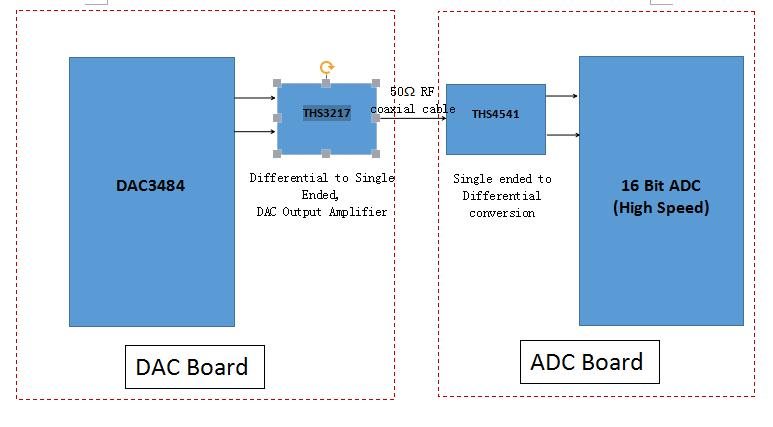Other Parts Discussed in Thread: DAC3484, THS4541, ADS42LB69, TINA-TI, DAC38J84, THS4509
Hi All,
I've been working on analog link based on high speed DAC-ADC
My DAC board has : connecting differential outputs from DAC3484 to Op-amp THS3217 which converts differential to single ended o/p, and this single ended o/p is terminated on the connector.
ADC board has: connecting single ended output from DAC board to THS4541 which converts single ended signal to differential and in turn this differential o/p is connected to 16-bit ADC inputs.
We used 50 Ohm RF coaxial cable to connect single ended o/p from DAC to ADC board.
Please suggest , are we using correct Op-amp parts for signal conversion in the design? any design concerns/considerations?
Attached the scheme here.
Thanks&Regards,
Shyamsundar Hegde



